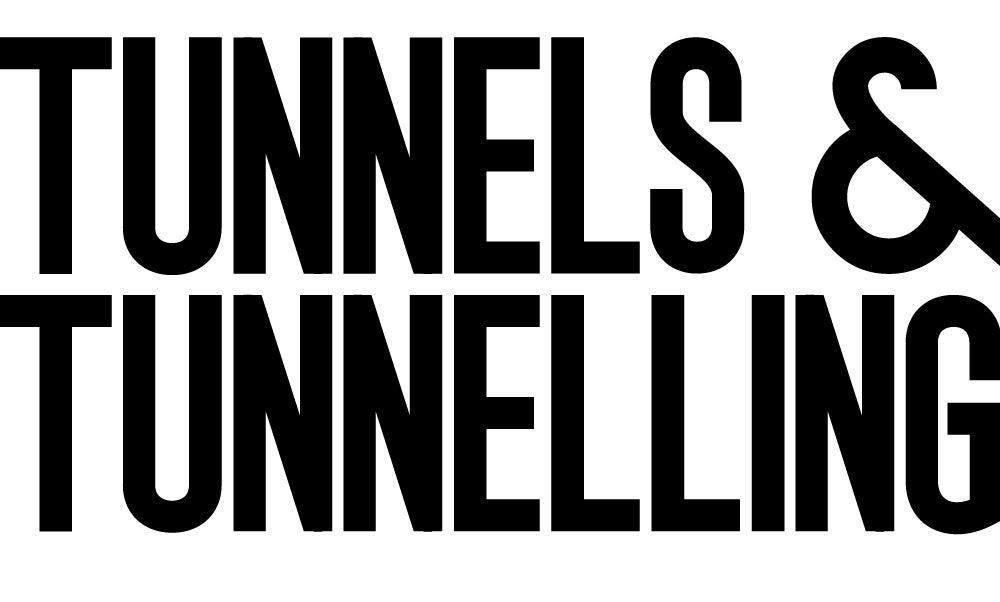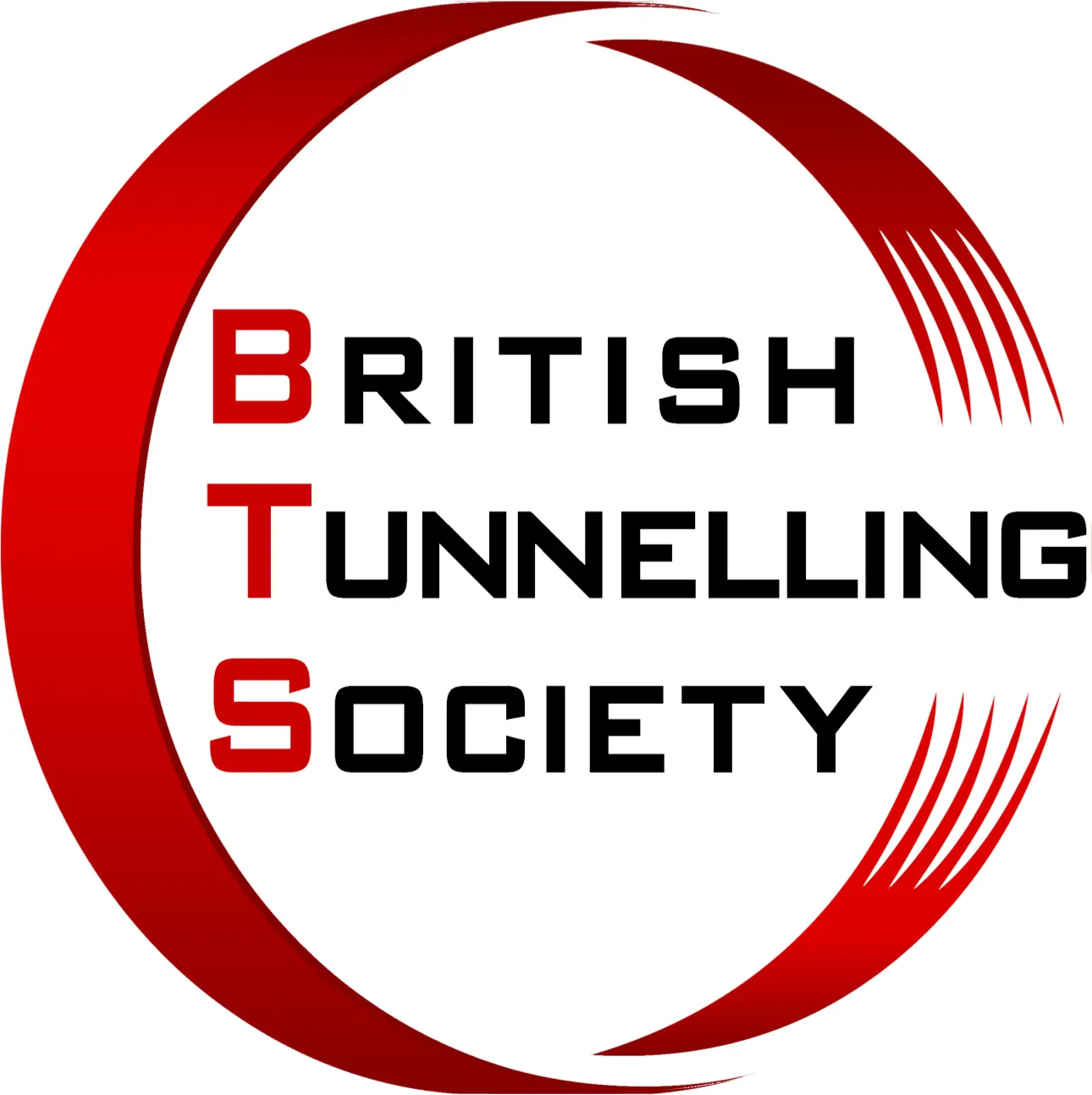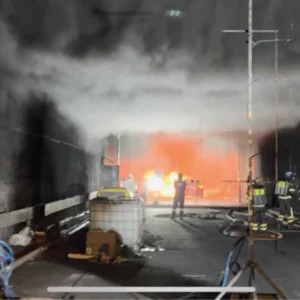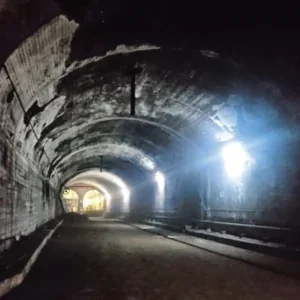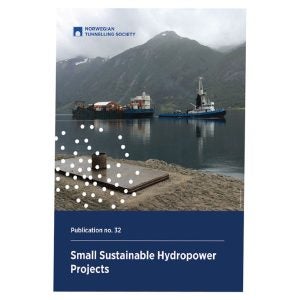It is very important when excavating large diameter NATM tunnels in an urban area, to determine spatial characteristics and the magnitude of ground movements. In particular surface settlement may cause serious harm to third party structures. Keeping the tunnel induced deformations of the ground within acceptable limits is one of the main objectives of all participants in the tunnel construction works. Numerical modelling, when calibrated with monitoring data from the construction site, is a useful tool in assessing the influence of various support measures in the tunnel. The presented back analysis of the support measures for the Mrazovka tunnel illustrates this.
Tunnel construction
The Mrazovka tunnel is situated in the city of Prague in the Czech Republic, and will form part of the city’s ring road. The tunnel consists of twin three-lane tunnels. The driven tunnels (width 16m, length over 1km) represent the most complex part of this construction. Excavation of the western tube (WT) started from the north portal(3), using a top heading, bench and Invert sequence (Figure 1). Soon after beginning the excavation works, deformations of the temporary tunnel lining and the ground surface above the tunnel exceeded the pre-determined trigger values. The main reason for this was very difficult geological conditions: clayey shales, disturbed by series of successive tectonic faults. The following measures were therefore adopted: pattern rock bolting; the enlargement of the top heading footings (elephant’s feet); and micropile support of the top heading feet. In addition, consolidation grouting was partly performed in advance from the pilot heading. A significant improvement in the partial and final deformations was subsequently achieved, thanks to a change in the face excavation sequence, to a side drift and central pillar sequence (Figure 2).
Basic model verification
To evaluate the effect of the individual support measures on the settlement a numerical analysis study was adopted. The cross-section at km 5.160 of the WT was selected for the analysis. This was one of the points where monitoring instrumentation was concentrated. The calculations were carried out using the finite element program PLAXIS. The three dimentional effects at the tunnel face were simulated by the load reduction method.
The original model geometry (Figure 3) represented an area about 200m wide and 110m high; the FE mesh included 2850 15-node triangular elements. The modelled area was divided into eight basic sub-areas according to the different rock types. The strata are layered sub-horizontally; the tectonic fault declining at an angle of roughly 30° to the horizontal.
The surface of the modelled area corresponded to the actual declination of the slope falling to the east. The rock mass behaviour was approximated by means of the Mohr-Coulomb model (drained behaviour). The input parameters of the rock mass were determined on the basis of the site investigation results. The modulus of deformation of the tectonic zone was determined according to the results of plate bearing tests. Parameters of the lining were based on the design.
The modelling of the tunnel construction process was divided into nine basic phases according to the real process of construction: 1) Pilot heading excavation; 2) pilot crown support; 3) invert support; 4) tunnel top heading excavation, followed by; 5) support; 6) tunnel bench excavation; 7) support; 8) tunnel invert excavation; 9) support; and finally the sensitive study.
A comparison of the theoretically determined deformations (using the mean values of the input geotechnical parameters), with the values obtained from the monitoring, was used for verification of the accuracy of the numerical model. The curve illustrating the progress in the model deformations in time was similar to the curve using measured values, although the absolute magnitude of the computed deformations was lower by about 35%.
A sensitivity study was performed to investigate the effect of input parameters on the results of analysis. The statistical method called Latin Hypercubes Sampling(2) was used for the purposes of the sensitivity study. The major merit of this method is the significant reduction of number of runs required, compared to other common statistical methods (e.g. two-point estimation of probability moments, Monte Carlo simulation, etc.).
The results of the Latin Hypercube Sampling showed that the final settlement of the tunnel crown at km 5.160 would be between 71mm and 213mm (with a confidence level/probability of 95%). The range of settlement, without considering the effect of the pilot heading excavation, was from 65mm to 198mm. The actual value (measured by extensometer) was 194mm, which fell within the calculated range. This suggested that the actual geotechnical parameters of the rock mass may have been worse than the average values taken from the site investigation, used in the original model.
Due to the disharmony between the computed deformations and the reality, it was necessary to modify the original model. The values of the input rock mass parameters were optimised, so that the computed vertical deformation of the tunnel crown corresponded with the measured value. All the input parameters were chosen within the limits determined by the site investigation. The computed values of ground deformations (Figures 4 and 5) were compared with extensometer measurements. The outputs of the verified model matched the measured values very well. Therefore all the remaining analyses were carried out using this new set of input parameters.
Support measures modeling
The following support measures were modelled at the chosen cross-section km 5.160: consolidation grouting from the pilot heading; rockbolting; micropile support of the top heading footing; temporary invert of the top heading (not actually used during construction); and side drift excavation sequence. The outputs of the models of each support measure are compared below with the vertical deformations of the tunnel crown in the modified model.
Boreholes for grouting(5) were drilled in a fan shape from the pilot heading, 3.5m apart, in a in a longitudinal direction; with cement mortar used as the grouting mix. Evaluation of the effect of the grouting on improvement of the mechanical properties of the rock mass was performed by means of pressuremeter tests.
The results showed that the modulus of deformation of the grouted rock was increased by 64% and the shear strength of the grouted rock was increased by 49%. The results of the grouting were worse in weaker layers than in the better quality rock mass. The improvement of grouted area parameters was included into the model (Figure 6).
The modelling outputs showed that the grouting reduced deformations at the tunnel crown by 22mm (about 10%). One of the reasons for this is probably the insufficiently large area of grouted rock (an area up to the distance of 4m from the tunnel tube lining was grouted). Results of the model showed subsidence of the grouted area as whole. Therefore it can be assumed that the grouting effect would be greater with an increase in the grouted area. Another reason for the lower impact is the effect of the tectonic fault across the tunnel profile. The left-hand part of the grouted area rests on a zone of lower quality rock. Its unfavourable physical-mechanical characteristics are the reason for plastification of this zone, which increased subsidence of the grouted vault.
Cement grouted steel rock bolts were used at the profile. The 4m long rock bolts were installed in a 2m square grid pattern. The selected numerical model overestimated the beneficial effect of the rockbolting. The results of the modelling confirmed the known influence of the time of installation of the rockbolts and installation of the primary lining. Rockbolts installed simultaneously with the lining improved the final magnitude of deformations by up to 90mm (45%).
However, if there is a longer delay between installation of the lining and the bolts, the resulting improvement is substantially lower (18mm, 9%). Obviously it is difficult to perform the anchoring simultaneously with the application of shotcrete. However, minimising the installation time delay makes the effect of the anchoring substantially more significant. Moreover, it is possible to install the rock bolts on the rock face before shotcreting.
Steel micropiles (70mm diameter) were used in the Mrazovka tunnel for the top heading support. They were anchored by means of pressure grouting with cement mortar, and were installed under the elephant’s feet when deformations exceeded trigger values
The calculations showed that influence of the time delay between spraying of the top heading lining and installation of micropiles is quite significant. If the support had been installed simultaneously with the lining, the resulting deformations would have improved by 65mm (33%). The delayed installation of micropiles means a significant reduction of the resulting effect (only 25mm, 12%).
Temporary closure of the top heading by use of an invert is a measure that can be applied to stabilise the vertical deformations. However, this measure slows construction progress significantly.
Again, two models were developed. In the first, simultaneous theoretical installation of the invert with the top heading lining was calculated. In the second, the top heading vault was installed first, followed by the invert. Computation results showed that the time delay (in the course of the works execution) again has a significant influence on the resulting effect. The immediate closure of the top heading by invert would cause reduction of resulting deformations by 45mm (22%). Significant delay in the application of this measure would negate any of the benefits.
The computed values of internal forces in the temporary invert showed that their values fall down (by about 67%) with increasing time delay in installation of the temporary invert of the top heading. This is despite the fact that the joint at the top heading footing can transmit all the internal forces.
Transition from top heading and invert to the side drift and central pillar excavation sequence significantly reduced ground deformations. The geometry of the side drift and central pillar sequence applied later in the construction of the Mrazovka tunnel, were used for the purposes of the modelling.
Two similar models were developed. The intention was to describe the influence of the side drift method of excavation on the resulting deformations. The first model described excavation of side drifts in two benches, when the bottom section of the drifts were excavated after installation of the upper part of the lining. The second model considered the full-face excavation of the side drifts.
The results of the modelling showed that the final deformation for full-profile excavation would be 114mm (a reduction of 101mm, i.e. 47%, compared to the original value). If the side drifts were excavated in two phases, the final deformation would increase to 134mm (a reduction of 81mm, i.e. 38%, than the deformation in the top heading sequence, and higher by 20mm, i.e. 18%, compared to the full face excavation of the side drifts). In combination with timely installation of rockbolt support, it was estimated that a reduction of the deformations would been seen within the range of 50%-70%, when using the side drift and central pillar excavation sequence.
Conclusion
The purpose of this study was to evaluate the effect of various support measures on the vertical deformations of a large diameter NATM tunnel. Finite element numerical calculations allowed the comparison of different measures without any cost demanding trials. Construction of the Mrazovka tunnel was used for purposes of back analysis. A sensitivity study was provided using a statistical method called Latin Hypercube Sampling. This powerful and time-efficient method showed the very significant impact of uncertainties in ground parameters on the results of calculations. The original model was verified by comparing the modelling results with monitoring of the extensometers installed above the tunnel. Consequent models were developed by addition of support measures into the verified model. Comparison of the results is summarised in Table 3.
The results showed that the most effective measure was the change in excavation sequence. This change resulted in a reduction of settlement by almost 50%. The effect of other measures offered a reduction of up to 30%. The effect of consolidation grouting seemed to be quite low considering the effort associated with its application.
The final results of the numerical calculations cannot be generalised and adopted for design purposes of future tunnels, as they are specific to the Mrazovka tunnel. The results were also affected by the way of modelling. However, the results might be used as initial estimation of support effects in similar cases.
Related Files
Figure 1
Figure 5
Figure 2
